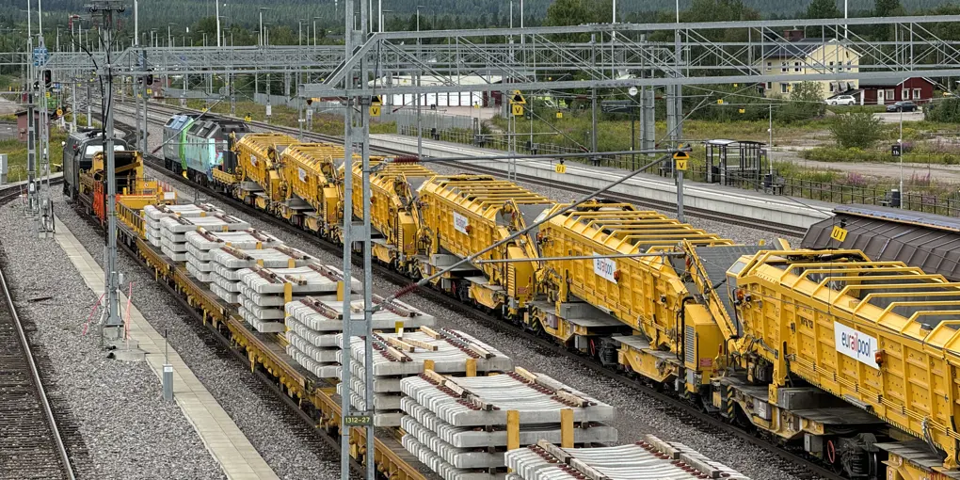
The Swedish Transport Administration (Trafikverket) has launched the second and final phase of the track replacement project between Gällivare and Kiruna on the Malmbanan (Iron Ore Line). The aim is to improve the railway’s reliability and make it easier to maintain.
Once completed, the project will allow for an increase in the maximum permitted wagon weight to 30 tonnes.
Trafikverket has begun extensive track renewal work on the full 89-kilometre stretch between Gällivare and Kiruna. Last summer, around 30 kilometres of track between Gällivare and Håmojåkk were upgraded as part of the first phase.
“This is a long-planned initiative and is vital for ensuring a resilient and dependable railway infrastructure. The work involves replacing rails, sleepers, and ballast using dedicated track renewal and ballast cleaning trains,” said Urban Kauma, Project Manager at Trafikverket.
To boost line capacity and ensure safety, track and switch replacements will continue from June to September. During this period, there will be daily eight-hour service interruptions on the Gällivare–Råtsi section.
In 2022, a derailment occurred at the station Linaälv on the Gällivare-Råtsi section, which is part of the Malmbanan and during the investigative work surrounding this accident, it was established that the rails and gears are badly worn and need to be replaced. After analysis work during the fall of 2022, the Swedish Transport Administration made a decision to bring forward a planned track change on the affected section by one year.
The Malmbanan, or Iron Ore Line, stretches from Boden to Riksgränsen, where it links to Norway’s Ofoten Line and continues to Narvik. This line connects Narvik in Norway with Luleå in Sweden, playing a crucial role in cross-border freight transport.
Trafikverket is also rolling out the European Rail Traffic Management System (ERTMS) along the Malmbanan. The project covers the Riksgränsen–Boden route, including the Kiruna–Svappavaara and Gällivare–Koskullskulle branches. Preparatory work began in 2019, and by 2024 the Riksgränsen–Boden segment was fully equipped with the new signalling system. Installation on the Boden–Luleå section is planned for 2029, although this section is not yet financed under Sweden’s national infrastructure plan.
The ERTMS programme on Malmbanan is co-financed by the EU through the Connecting Europe Facility (CEF), with a total contribution of EUR 44 million.
Share on:



